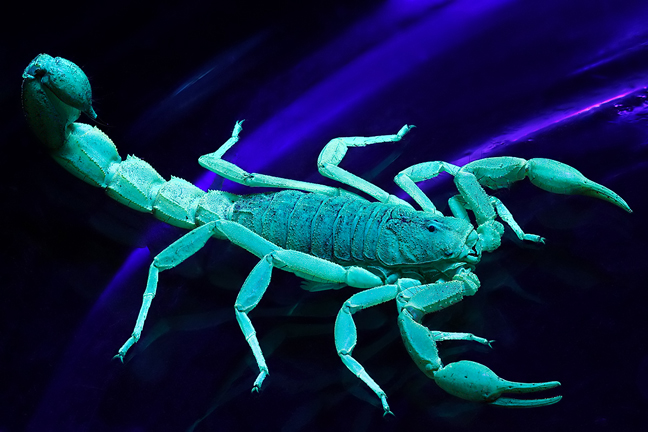Scorpions may use the mysterious green glow they emit in ultraviolet light as a crude tool for deciding when the night is too bright for them to go out safely. As scorpions are nocturnal hunters, it seems odd that they fluoresce instead of camouflaging themselves. Carl Kloock of California State University in Bakersfield now thinks he has the explanation. The animals produce a limited amount of fluorescing pigment, which degrades as it fluoresces. So Kloock overexposed 15 scorpions to UV light until their pigment was used up, and then compared their night-time behaviour with that of 15 untreated scorpions when exposed to a level of UV that mimicked the moon and stars. The fluorescent ones stuck to one small area, while the others wandered around at random (Journal of Arachnology, vol 38, p 441). The crux, says Kloock, lies in what the animals can see. If, as seems probable, they can’t see the UV component of starlight and moonlight, they would be unaware the night was bright enough to allow predators to see them. They can, however, see green so can probably detect their own glow. Doug Gaffin of the University of Oklahoma in Norman says scorpions may hide in the faint night-time shadow of a blade of grass, suggesting they are very sensitive to light. He adds that fluorescence might have other functions, such as warning predators of the scorpions’ venom.
Source: New Scientist (photo courtesy of Mundo Poco)


